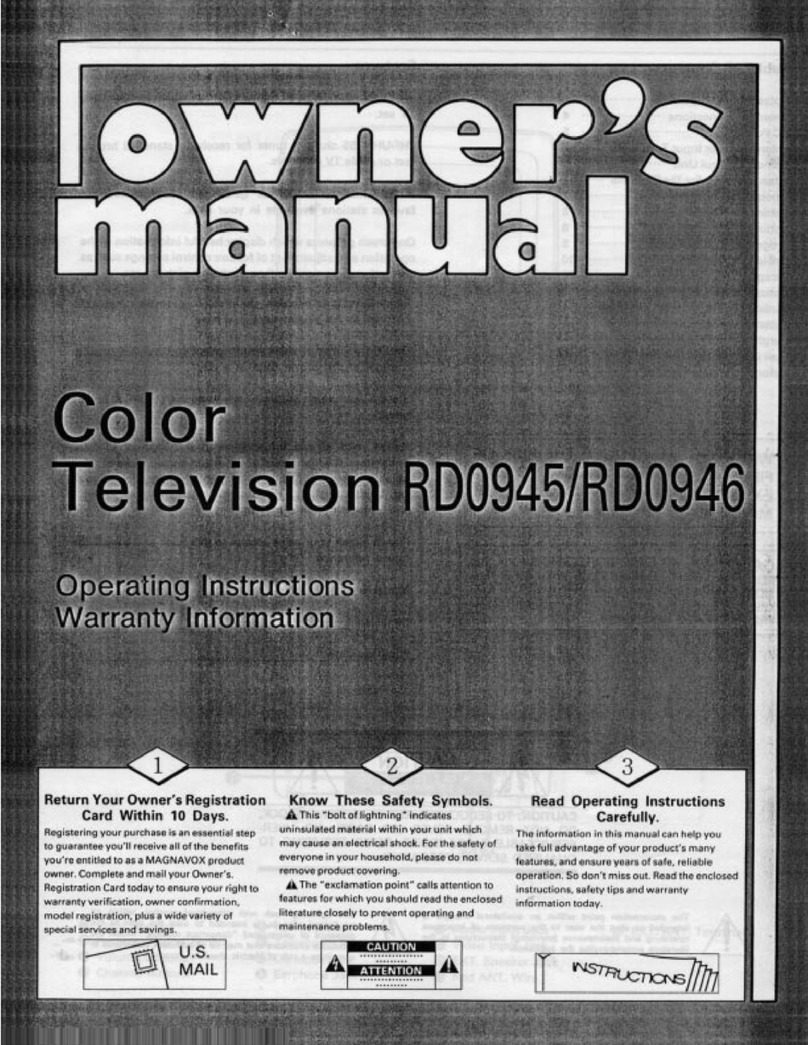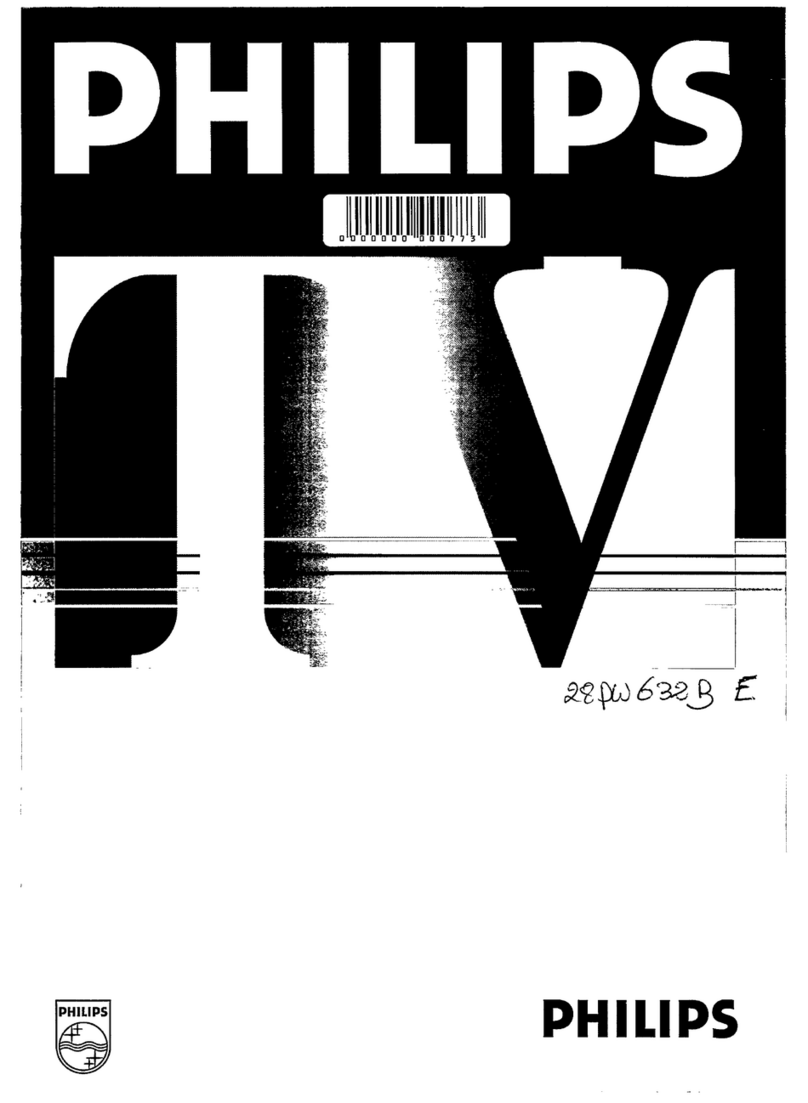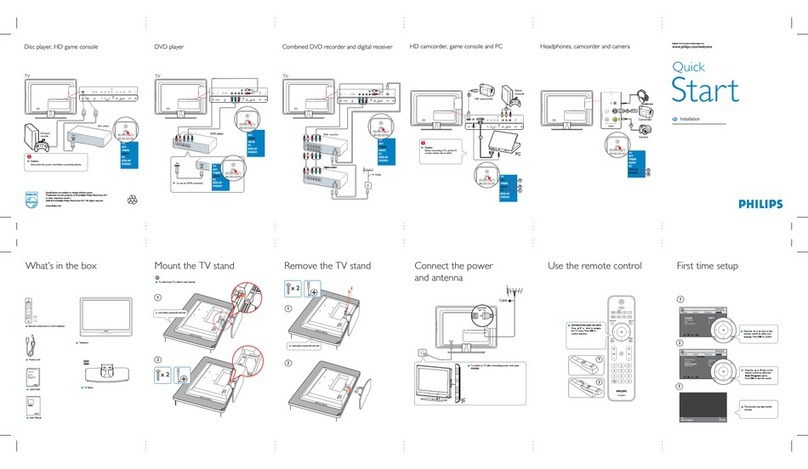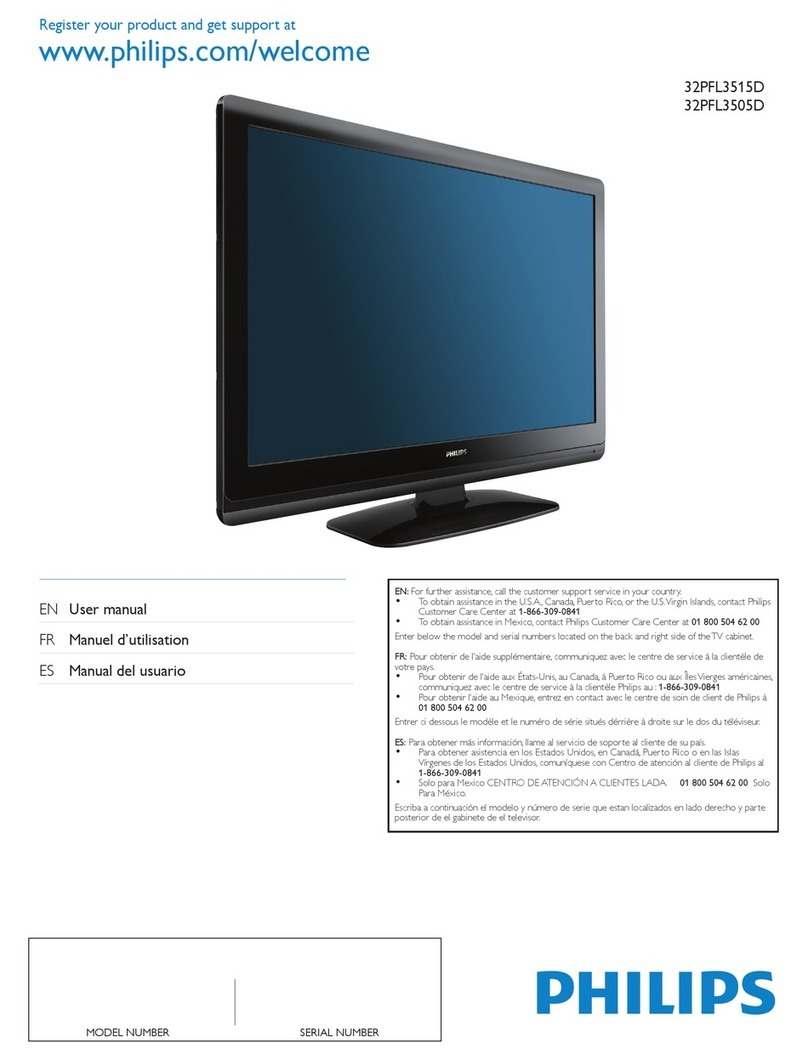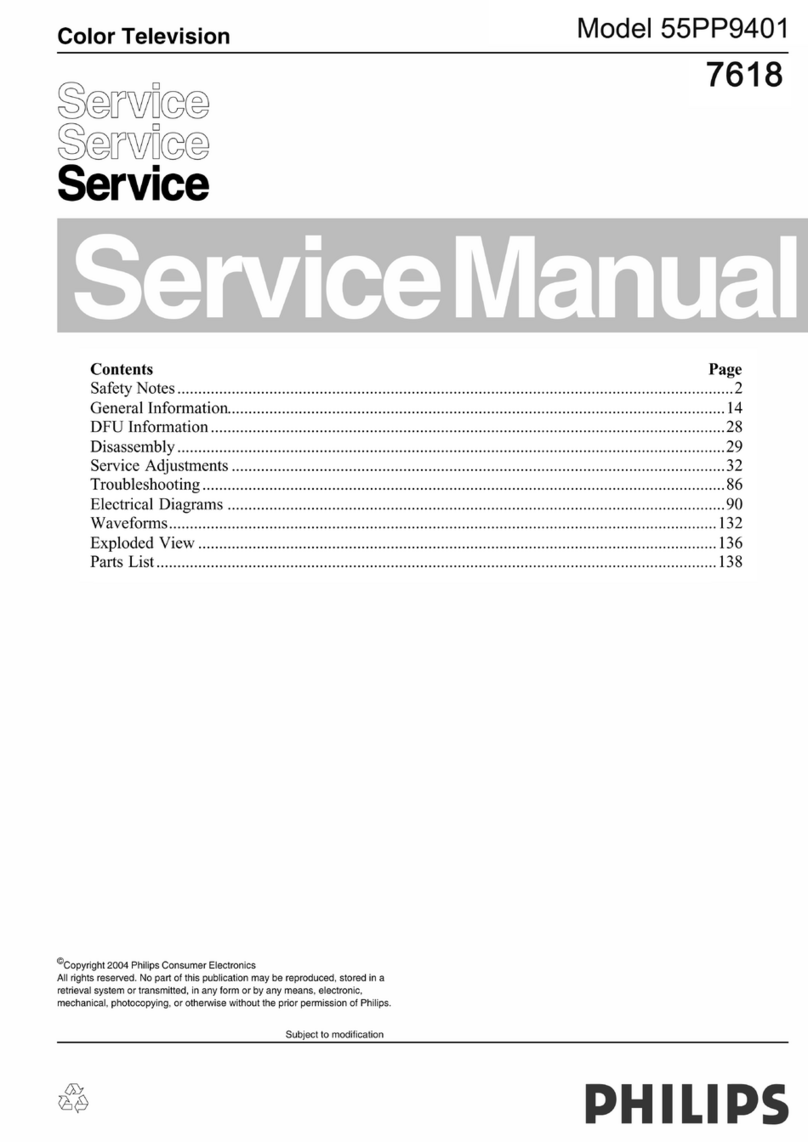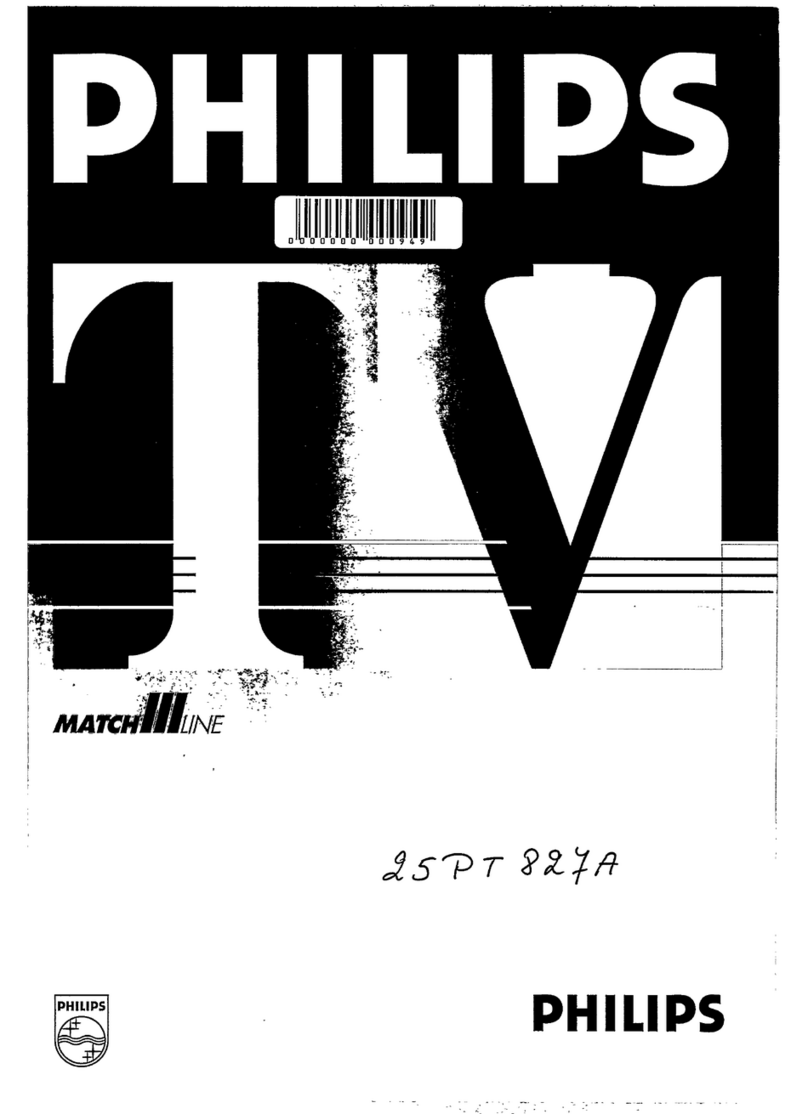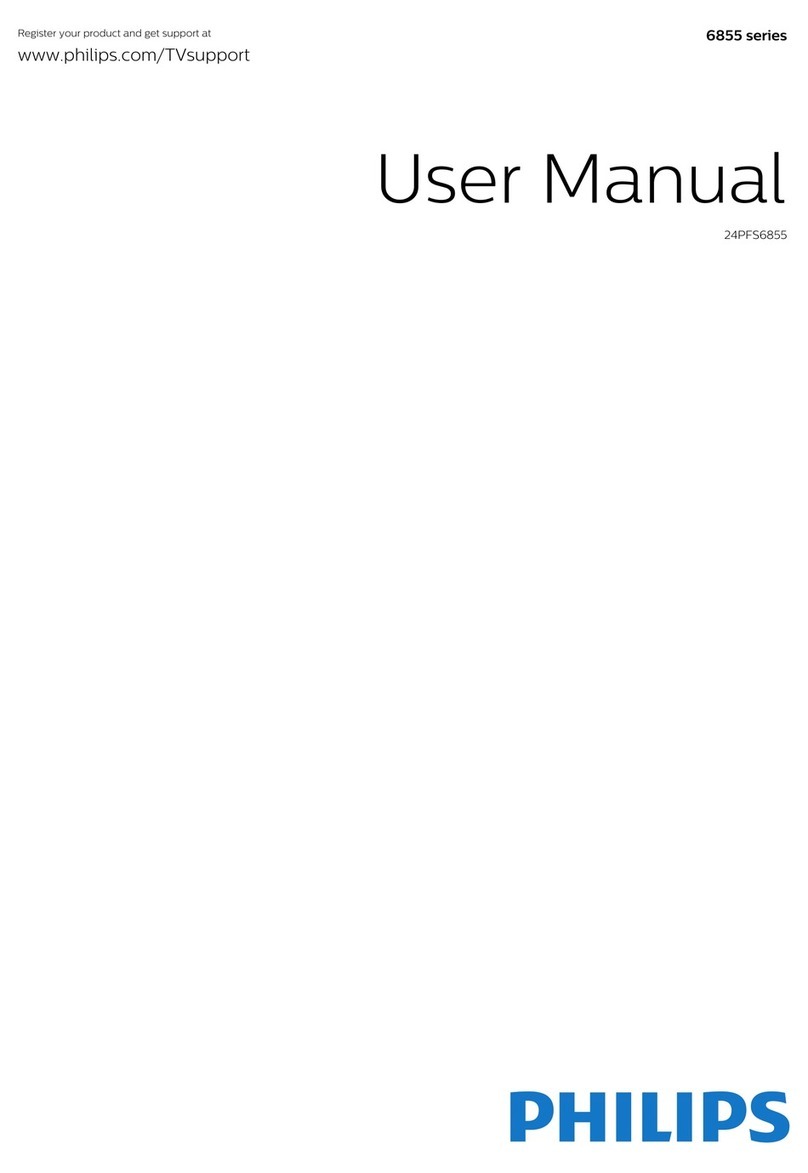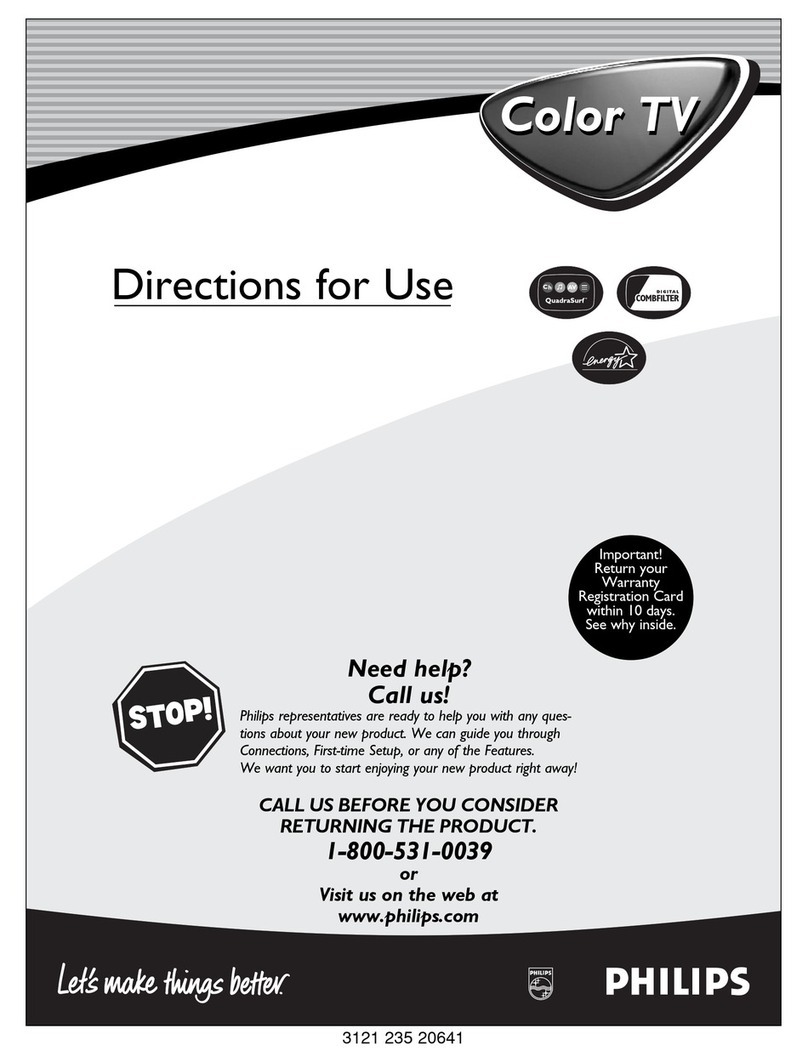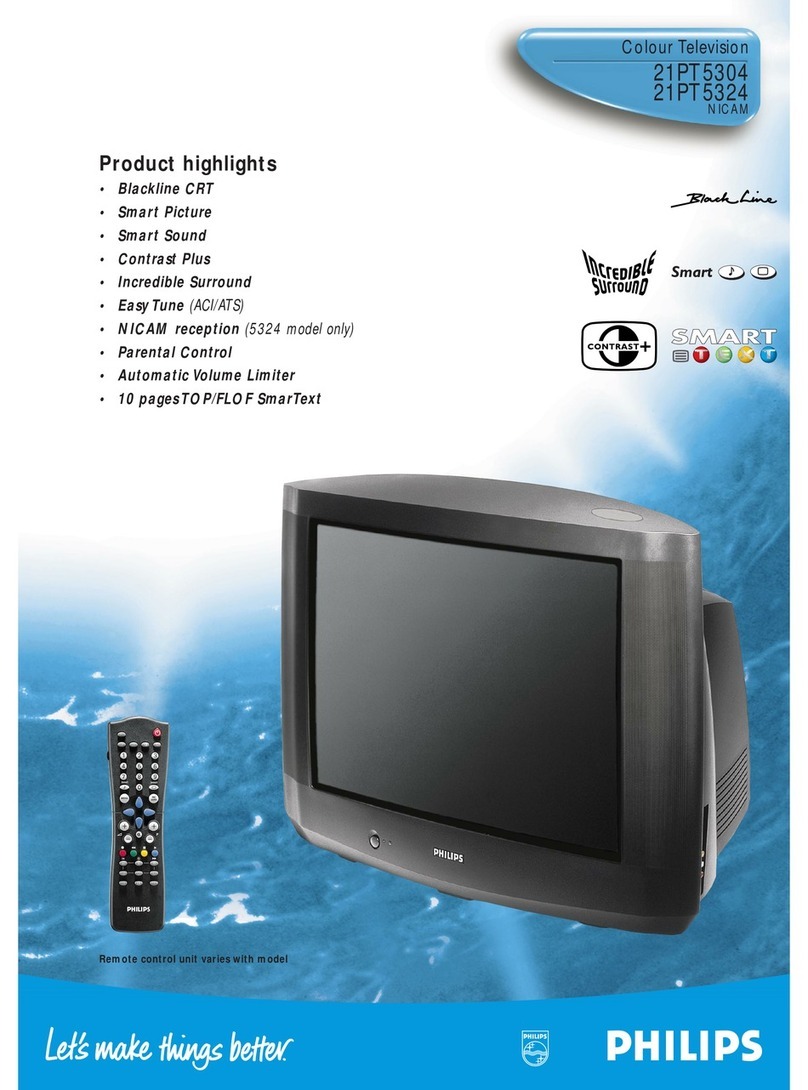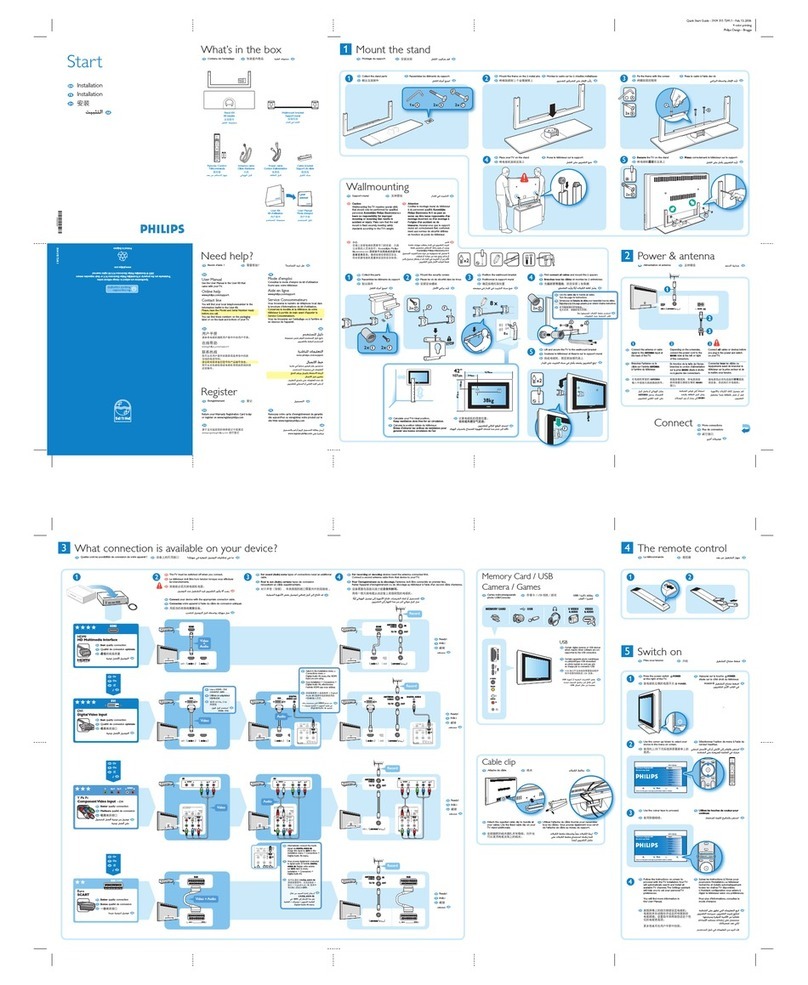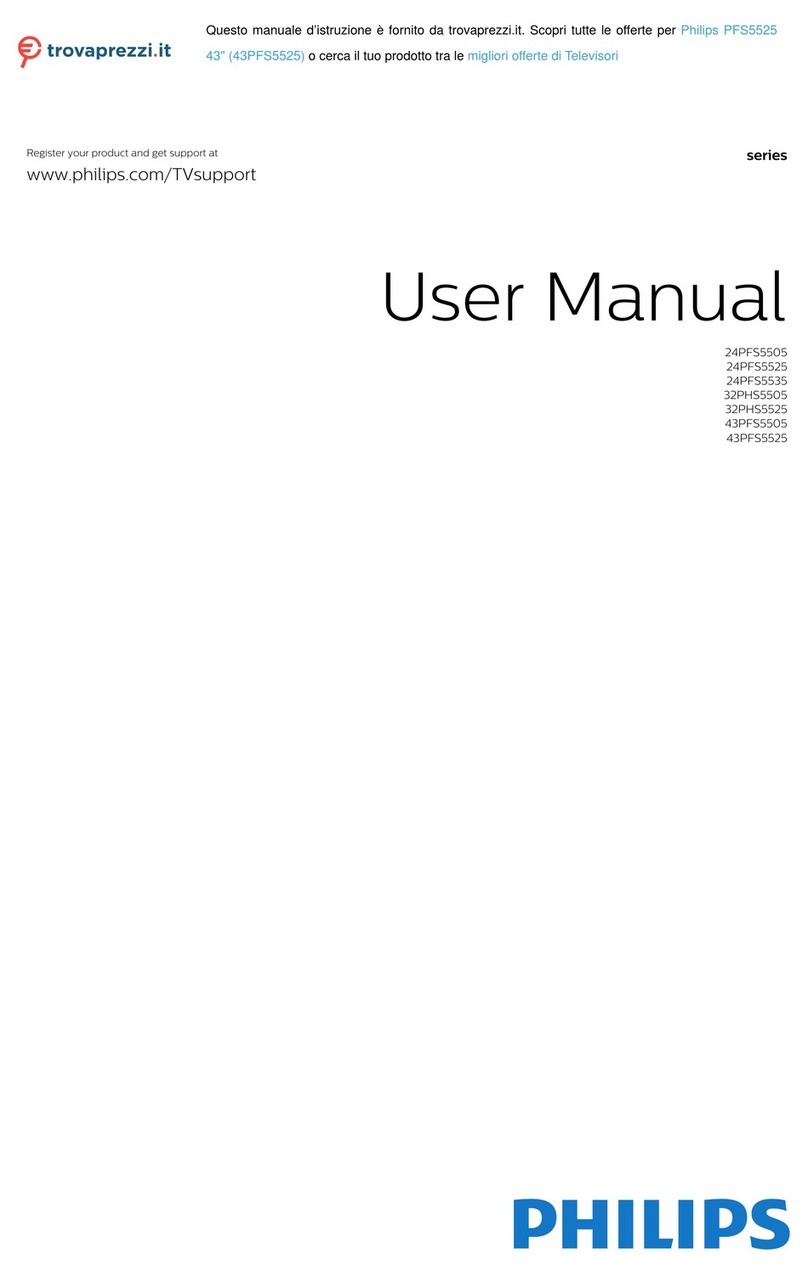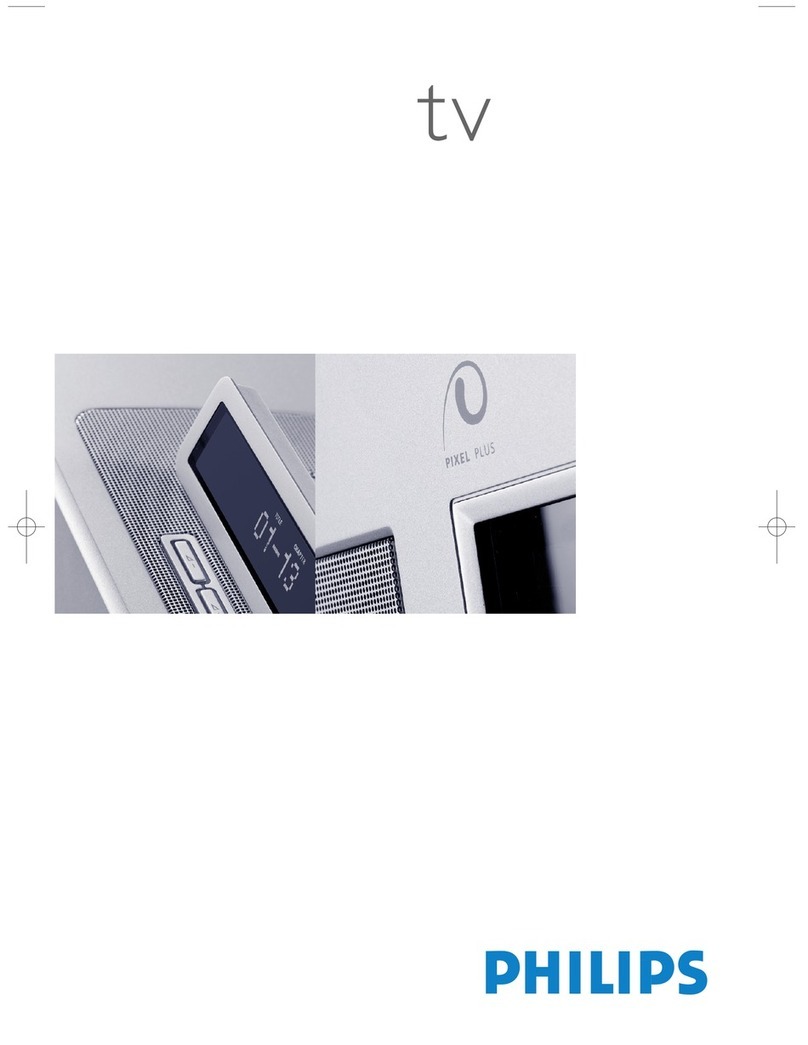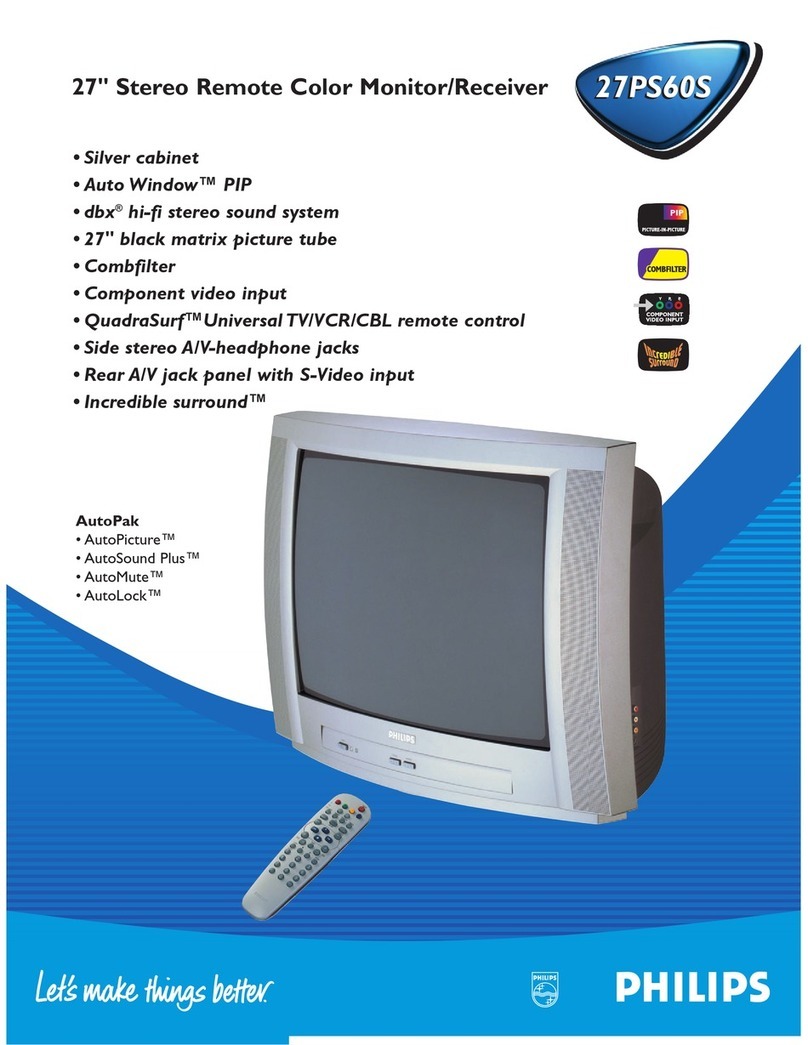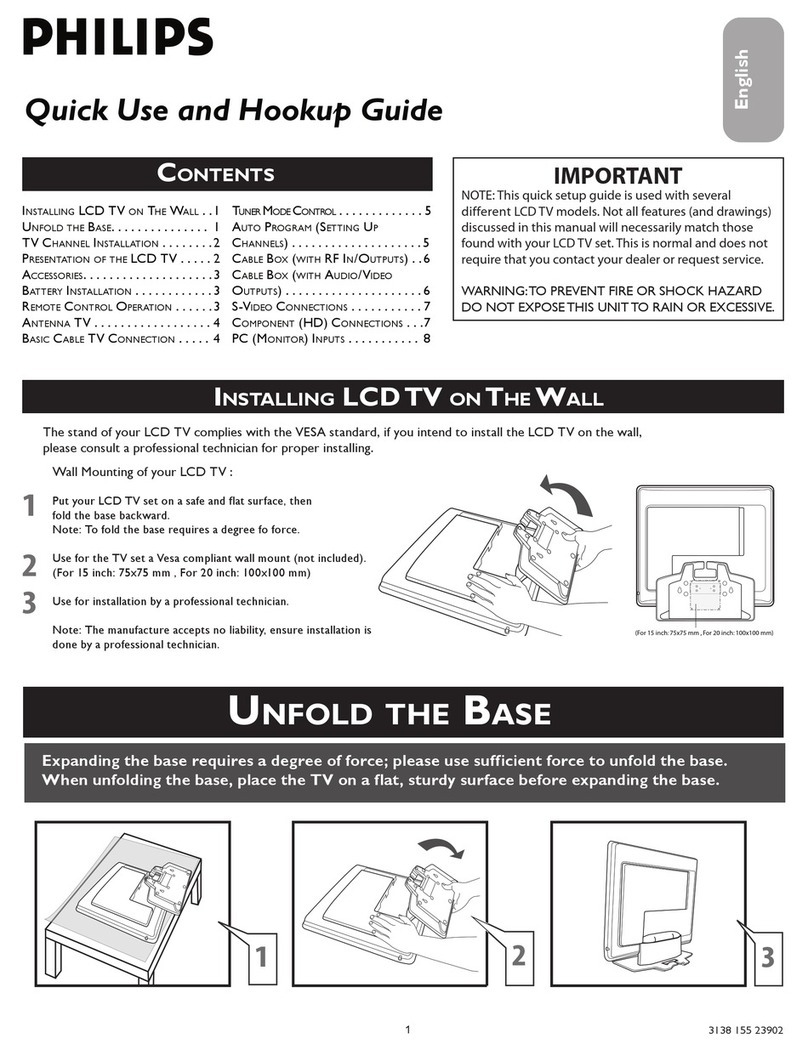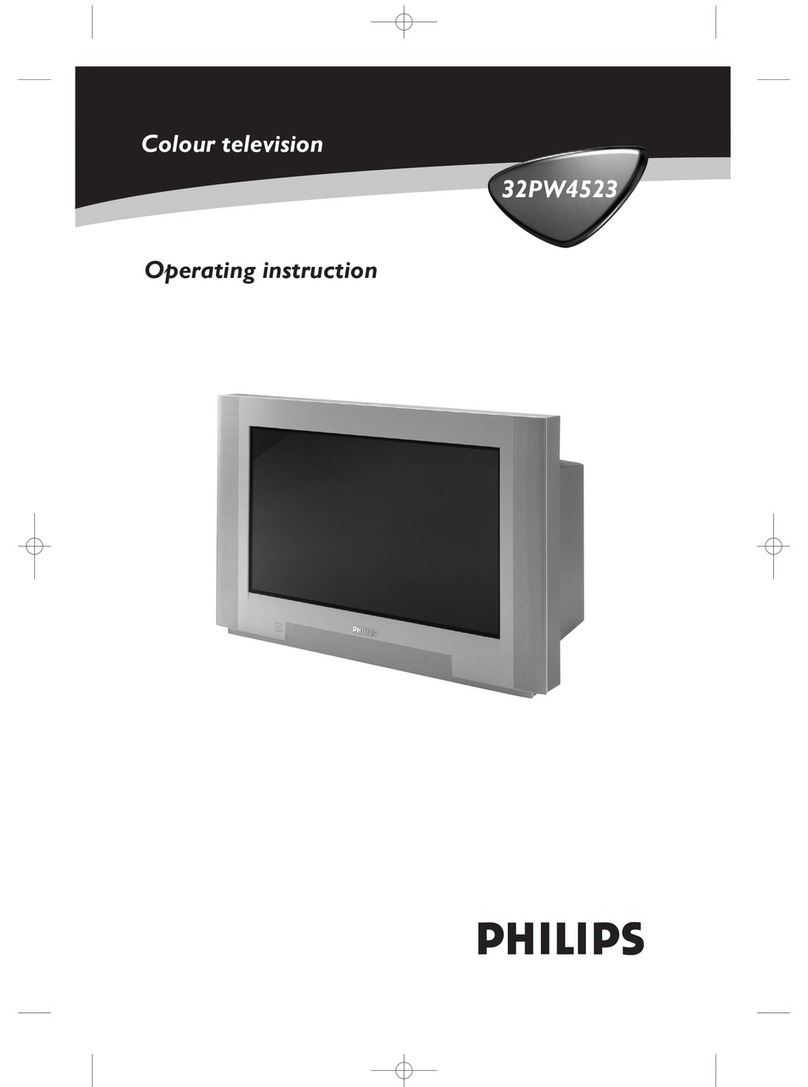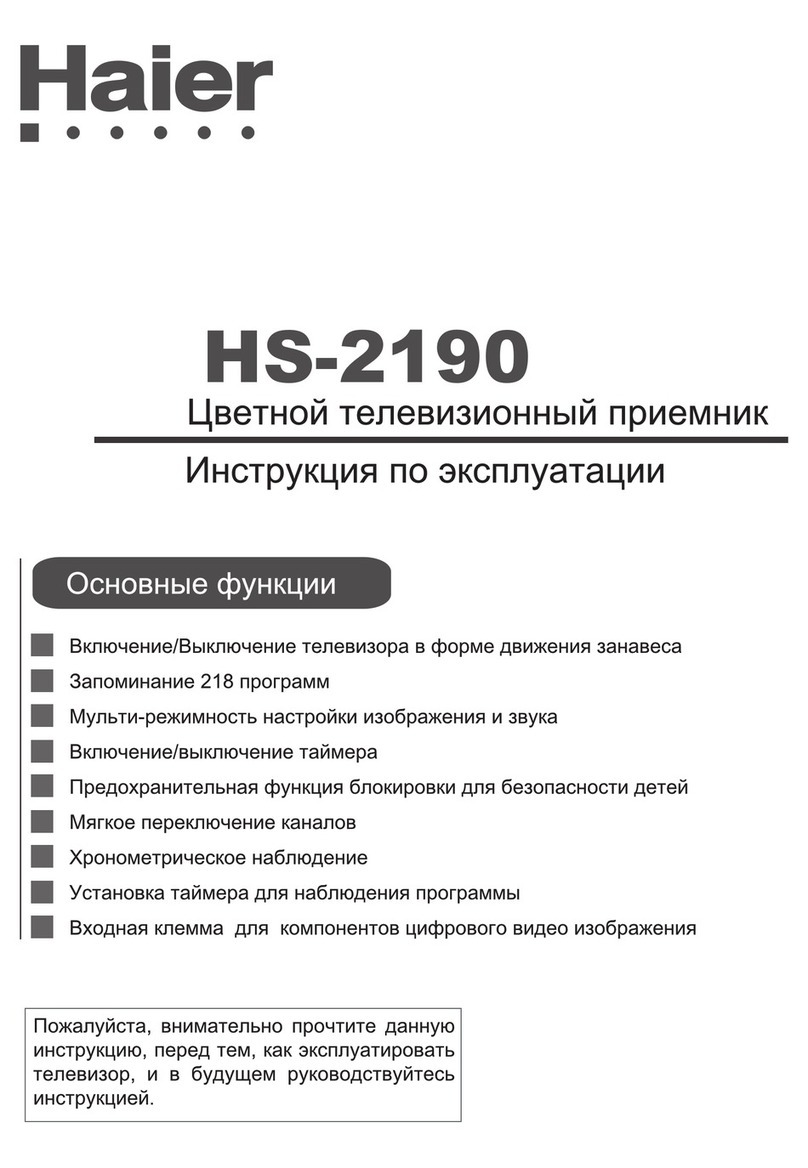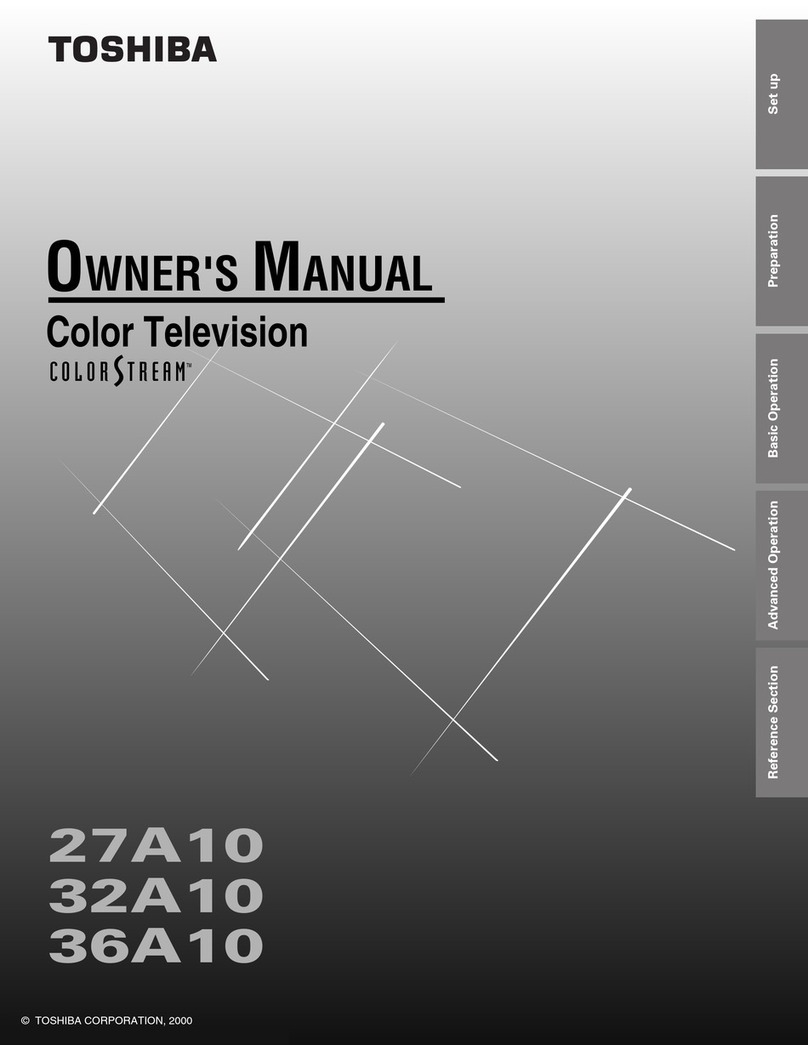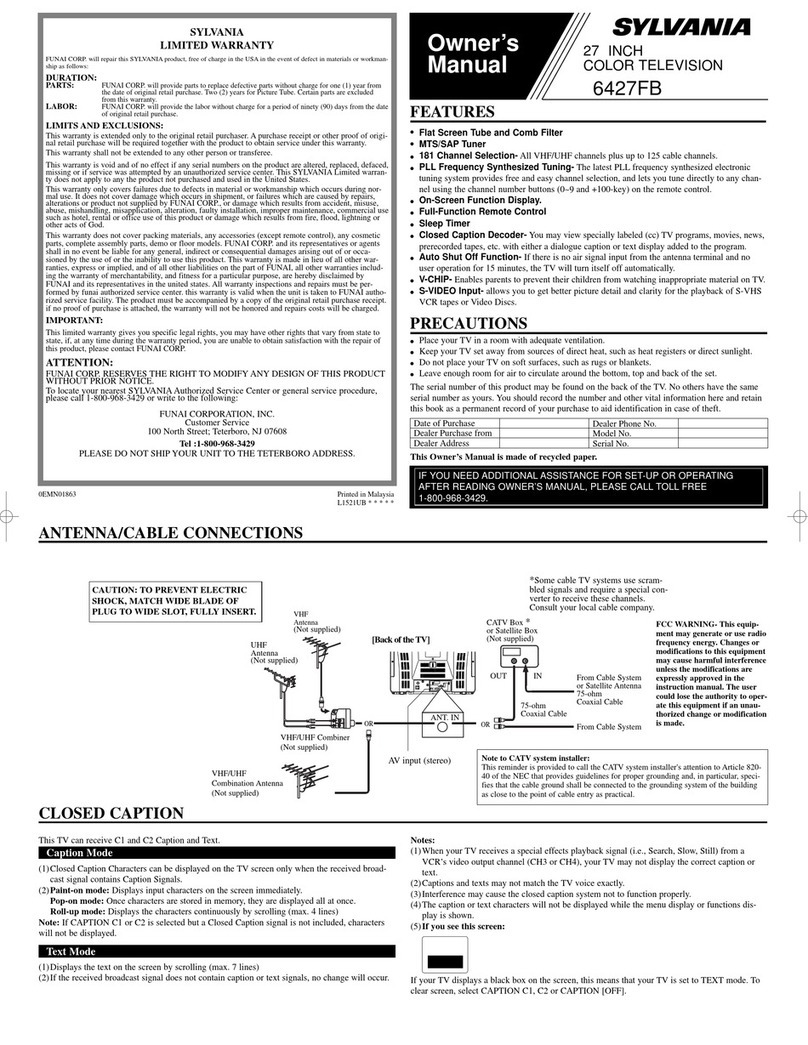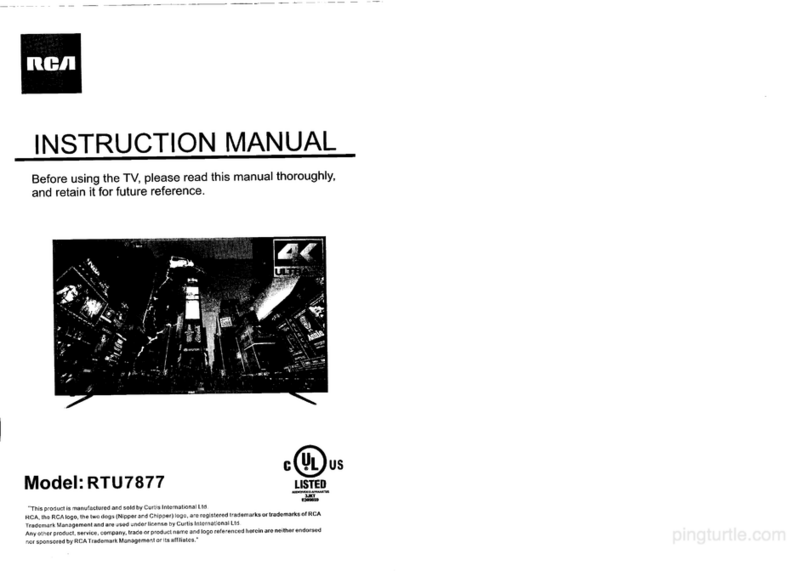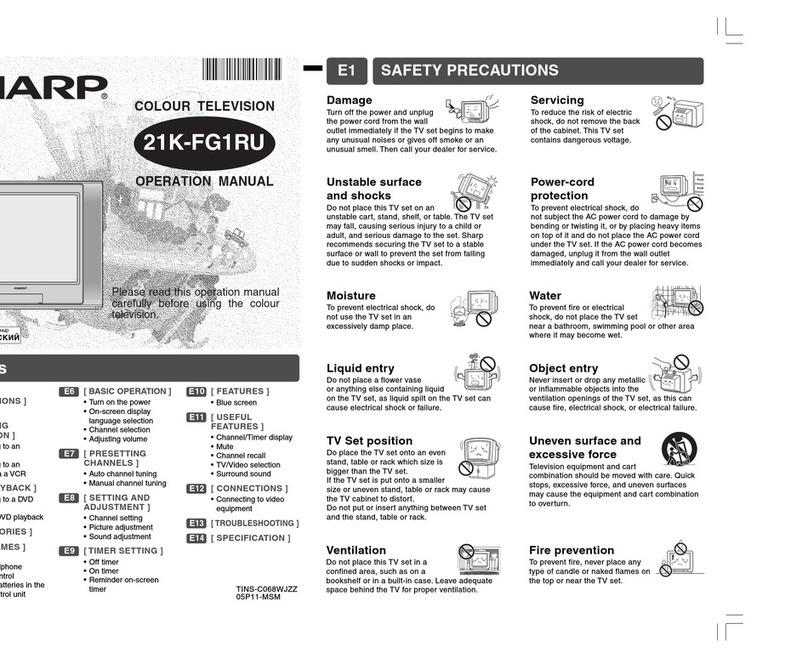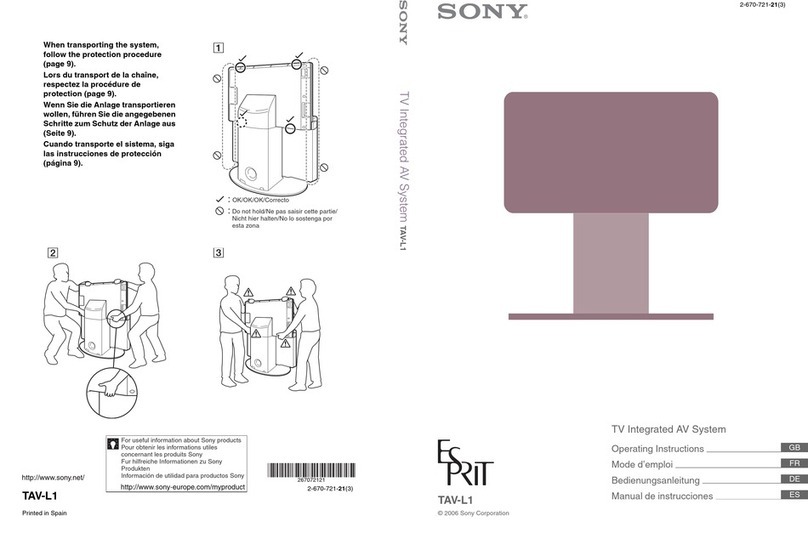
TE2.1E AA EN 4
2. Safety Instructions, Warnings and Notes
2.1 General
1. Use only the original spare parts with the same specifications for replacement.
2. Only the original fuse value should be used.
3. Safety components, indicated by the symbol, should be replaced by components
identical to the original ones.
4. Main leads and connecting leads should be checked for external damage before
connection. Insulation must be checked. Parts contributing to the safety of the
product must not be damaged or obviously unsuitable. This is valid especially for
insulators and insulating parts.
5. Thermally loaded solder pads are to be sucked off and re-soldered.
6. Ensure that the ventilation slots are not obstructed.
7. Potentials as high as 25 KV are present when this receiver is operating. Operation
of the receiver outside the cabinet or with back cover removed involve a shock
hazard from the receiver.
8. Servicing should not be attempted by anyone who is not thoroughly familiar with
precautions necessary when working on high voltage equipment. Perfectly
discharge the high potential of the picture tube before handling it. The picture tube
is highly evacuated and if broken. Glass fragments will be violently expelled.
Always discharge the picture tube anode to the receiver chassis to keep of the
shock hazard before removing the anode cap.
9. Keep wire away from the high voltage or high temperature components.
10. When replacing a wattage resistor, keep the resistor 10mm away from the circuit
board.
2.2 Handling the MOS chip components
MOS circuit requires special attention with regard to static charges. Static charges may
occur with any highly insulated plastics and can be transferred to
persons wearing clothes and shoes made of synthetic materials. Protective circuits on the
inputs and outputs of MOS circuits give protection to a limited extend only due to time of
reaction. Please observe the following instructions to protect the components against
ESD.
1. Keep MOS components in conductive package until they are used. Most
components must never be stored in styropor materials or plastic magazines.
2. Personnel must not touch the MOS components to avoid electrostatic discharging.
3. Hold the component by the body touching the terminals.
4. Use only grounded instruments for testing and processing purposes.
5. Remove or connect MOS Ics when operating voltage is disconnected.
6. Personnel in charge must make sure that they are connected with the same
potential as the mass of the set by a wristband with resistance.
2.3 X-Ray radiation precaution
Excessive high voltage can produce potentially hazardous X-RAY radiation. To avoid
such hazard, the high voltage must not be above the specified limit. The nominal
value of the high voltage of this receiver is 25KV at zero beam current (minimum
brightness) under 220 V AC power source. The high voltage must not under any
circumstance, exceed 30KV. It is recommended the reading of the high voltage to be
recorded as a part of the service record. It is important to use an accurate and reliable
high voltage meter. The primary source of X-RAY radiation in the TV receiver is the
picture tube. For continued X-RAY radiation protection, the replacement tube must be
exactly the same type tube as specified in the part list.

